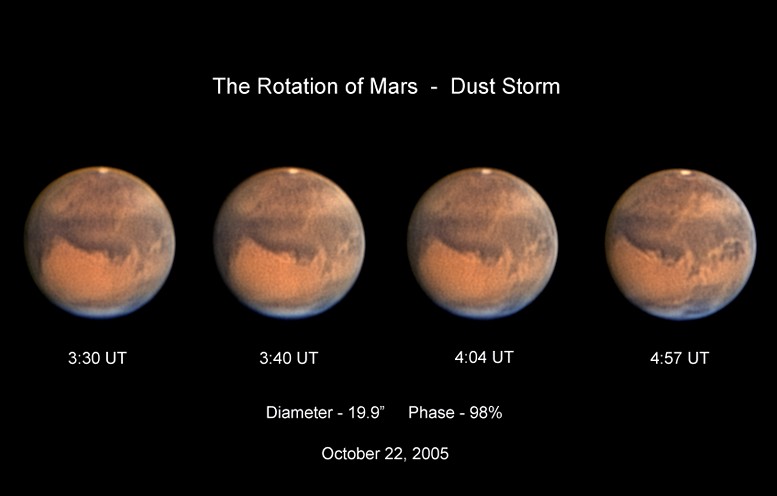Credit & Copyright: Chris Cook
Explanation:
This October, Mars has become a
bright, yellowish star in
planet Earth's sky as it approaches
oppositon, the period
when Mars and Earth pass close as they orbit the Sun.
How close is Mars?
A mere 70 million kilometers or so, close enough to allow
Earth-bound
astronomers excellent views of the
alluring Red Planet.
For example,
this
series of sharp Mars images follows the development of a dust storm
as the planet rotates from right to left.
The telescopic views clearly show details of the
martian surface,
including the planet's southern ice cap (top) and
hood of clouds over the north pole at the bottom edge.
The dust storm
itself is visible as light yellowish band
across an otherwise dark region in the southern hemisphere.
Even if a telescope isn't handy, be sure to check out
Mars soon.
It will continue to shine brightly in the night
over the coming days.
1999 2000 2001 2002 2003 2004 2005 2006 2007 2008 2009 2010 2011 2012 2013 2014 2015 2016 2017 2018 2019 2020 2021 2022 2023 2024 2025 |
Yanvar' Fevral' Mart Aprel' Mai Iyun' Iyul' Avgust Sentyabr' Oktyabr' Noyabr' Dekabr' |
NASA Web Site Statements, Warnings, and Disclaimers
NASA Official: Jay Norris. Specific rights apply.
A service of: LHEA at NASA / GSFC
& Michigan Tech. U.
|
Publikacii s klyuchevymi slovami:
Mars - dust storm - Mars - pylevaya burya - protivostoyanie
Publikacii so slovami: Mars - dust storm - Mars - pylevaya burya - protivostoyanie | |
Sm. takzhe:
Vse publikacii na tu zhe temu >> | |
